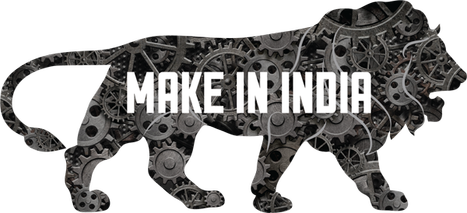On May 12, Prime Minister Narendra Modi delivered his fourth COVID-19 address to the nation. This speech was very distinct from the previous three, for it came with a new vision, a new promise of a new India, accompanied by two very catchy slogans: “Atmanirbhar Bharat” and “Vocal for Local”.
The Prime Minister asserted that based on these underlying principles, India would dominate the 21st century, as it is destined to do so. Upon looking closely, both these slogans connote the same government programme: Make in India.
Ideologically, we have simply repackaged Make in India and served it with renewed enthusiasm. This should not come as a surprise; after all this nation is built on the back of ‘Swadeshi’ and ‘Self-Reliant India’.
Atmanirbharta is a reiteration of the same philosophy rather than enunciating a new policy. India’s founding fathers propagated this ideal for the first 40 years of the country’s independence. Unfortunately, it remains as unsuitable today as it was 70 years ago.
These ideals are hardly ideal for India. The country’s manufacturing capabilities and supply chains are still not up to the mark and their robust makeover has left much to be desired. There is a need to acknowledge that manufacturing involves a fierce combination of technology and expertise and it takes a lot of time to expand the scope of local production in a globalised world. The unsuccessful attempt at ‘Make in India’ is a shining example of what happens when this winning combination is not present.
So what happened with ‘Make in India’? Investments in new projects dropped since 2015 and while we courted impressive foreign direct investments (FDI), money coming into the manufacturing sector remained sluggish.
Not to mention, the courage it takes to see our employment numbers and wages per worker.
If that was not enough, India imposes tariffs on cheap consumer goods and keeps services out of the country. In fact, World Trade Organisation (WTO) has rightly pointed out that India’s tariffs are one of the highest in the world, with an average rate of 17.1%, according to WTO’s World Tariff Profiles.
This sounds like ‘Protect in India’ as columnist Swaminathan Aiyar has mentioned. So how can India prepare its MSMEs for the world while aggressively shielding them with protectionism and import duties? How can India attract investors while increasing trade barriers?
She cannot because these things scarcely work in exclusion. Currently, India accounts for about 2% of the total world export and so the idea that it can suddenly become self-reliant and a leader in trade is not just highly improbable, but virtually impossible. If India does not dismantle its protectionist system, ‘Vocal for Local’ will have the opposite effect of what it intends to do and in turn, hurt Indians.
India needs to let the free market do its work while simultaneously, continue to strengthen its local capacities. Protectionism doesn’t necessarily help the local economy. People will always buy the best of something, not just because the product is made in India.
When a certain player brings in a new or a better product, other players and entrepreneurs are incentivised to keep up. The local grocery store would not have half the products if some big chain had not introduced them first; as a matter of fact, the local grocery store would lose out on half its sales as well.
This is the essence of the free market that helps small players rather than hurting them. Right now, under the ‘Atmanirbhar Bharat Abhiyan’ global tenders up to Rs 200 crore are being disallowed by the government. Why? To protect MSME businesses that face ‘unfair competition’ from foreign companies. These MSME companies are not some nascent start-ups that need government help; they are rather inefficient age-old businesses that India protects at the cost of her citizens.
Provisions like these make them more complacent and ensure that they never become globally adept. India must strike down such provisions and free up the economy to ensure the prosperity of her local producers. Embracing free trade policies will drive the Indian economy faster and better.
Lastly, none of these steps should involve central planning. The government does not have the resources or the knowledge to implement an initiative of this magnitude. One of the key reasons why ‘Make in India’ didn’t succeed was that officials in Delhi did not have the knowledge of the domestic economy and its advantages; neither were they well-equipped and well-prepared to make the lion roar.
India can truly transform, and this is the perfect window to mop up the spilt milk, but we must not fall for the fallacies and delusions of the past. The ‘Atmanirbhar Bharat Abhiyan’ is not without its merits; the government intends to privatise all non-strategic PSEs and has decided to open up various sectors via PPPs (Public-Private Partnerships). Under the PPP model, the government has decided to auction off 6 airports, build a research reactor for the production of medical isotopes, establish irradiation technology facilities to assist farmers, convert government-funded housing to affordable rental housing complexes and best of all, it has opened up the space sector. Such measures will positively make our nation ‘Atmanirbhar’ and then India will dominate the 21st century as she is destined to do so.
Read more: ‘Saare jahan se achha’ is a Better Economic Mantra
Post Disclaimer
The opinions expressed in this essay are those of the authors. They do not purport to reflect the opinions or views of CCS.






